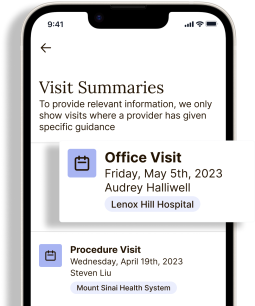Bladder Cancer Awareness Month aims to foster engagement and drive awareness around speaking to a healthcare professional as soon as possible if your loved one has blood in their urine, even if you're feeling unsure that it's serious.
5 things you should know about bladder cancer
Blood in the urine is the most common symptom of bladder cancer.
Smoking is the biggest risk factor for bladder cancer.
Bladder cancer is the 9th most common cancer in the world.
Bladder cancer is most common in men, but 1 in 4 cases are in women.
When caught early, bladder cancer is highly treatable.
Signs and symptoms
May include:
Blood in the urine (hematuria) may cause urine to appear bright red or cola-colored, though sometimes the urine appears normal and blood is only detected on a lab test.
Frequent urination
Painful urination
Back pain
If you notice that your loved one has discolored urine and are concerned it may contain blood, make an appointment with their provider to get it checked.
Types and stages
There are 3 types and 5 stages of bladder cancer. The following are very brief descriptions, though for more detailed information on the types and stages, check out the links in the Resources below.
3 TYPES
Urothelial carcinoma (previously known as transitional cell carcinoma) - begins in cells in the innermost tissue layer of the bladder and is the most common type of bladder cancer in the U.S.
Squamous cell carcinoma - begins in the squamous cells of the bladder and is associated with long-term infection or chronic bladder irritation. It's rare in the U.S., and more common in parts of the world where a certain parasitic infection (schistosomiasis) is a common cause of bladder infections.
Adenocarcinoma - begins in glandular (mucus-secreting) cells in the lining of the bladder and is very rare.
5 STAGES
Bladder cancer staging specifics follow the same TNM staging system guidelines used to grade other cancers, set by the American Joint Committee on Cancer.
T - tumor
N - nodes
M - metastasis
Stages are O - IV (also written as 0 - 4). The stage is determined by a few factors, including the tumor's size, location, and surrounding tissue or organ invasion.
Tumors are also graded, indicated with the letter "G" and a number 1-3 (sometimes 4). Grade describes how normal or abnormal cancer cells look under a microscope.
Statistics
Bladder cancer is the sixth most common type of cancer in the United States and is most likely to affect white men. The incidence rate of bladder cancer is four times higher among men than among women. It is also twice as high in white males as among Black, Hispanic, or Asian/Pacific Islander men.
Bladder cancer occurs primarily in older adults, with over 75% of new cases detected in patients 65 years and older. The median age at diagnosis is 73 years, and individuals aged 75–84 years account for the largest percentage of new cases (> 30%).
Approximately 78% of people diagnosed with bladder cancer survive five years or more after diagnosis.
Spot the Drop game
Spot the Drop is a game to test your reactions. It is an interactive experience that registers the amount of time it takes you to react to the changing graphics presented.

The Unsure Icon - What Do You See?
The game centers around the Unsure Icon, animated on the screen. The blood drop at the center of the icon invisibly rotates like a clock hand, only appearing at random times, which is when you click or tap on the screen. As well as offering you a timed result, it teaches you the key facts about early diagnosis.
By engaging people enjoyably and interactively, the game effectively breaks down barriers and facilitates meaningful dialogue about bladder cancer, ultimately contributing to increased awareness and early detection




